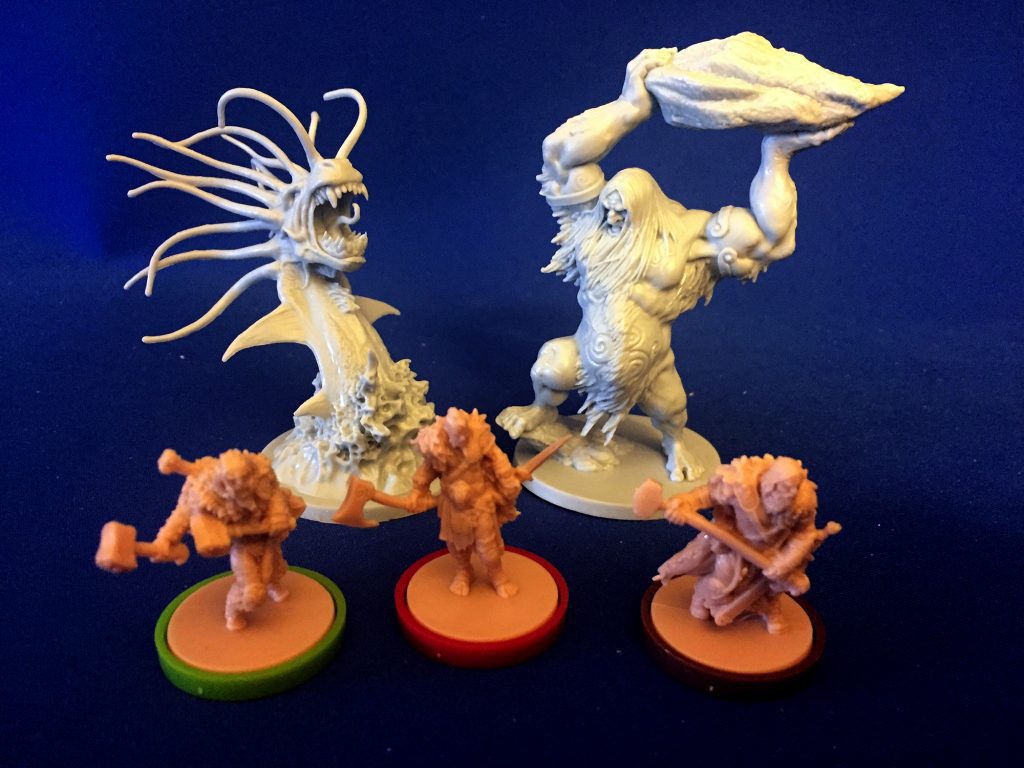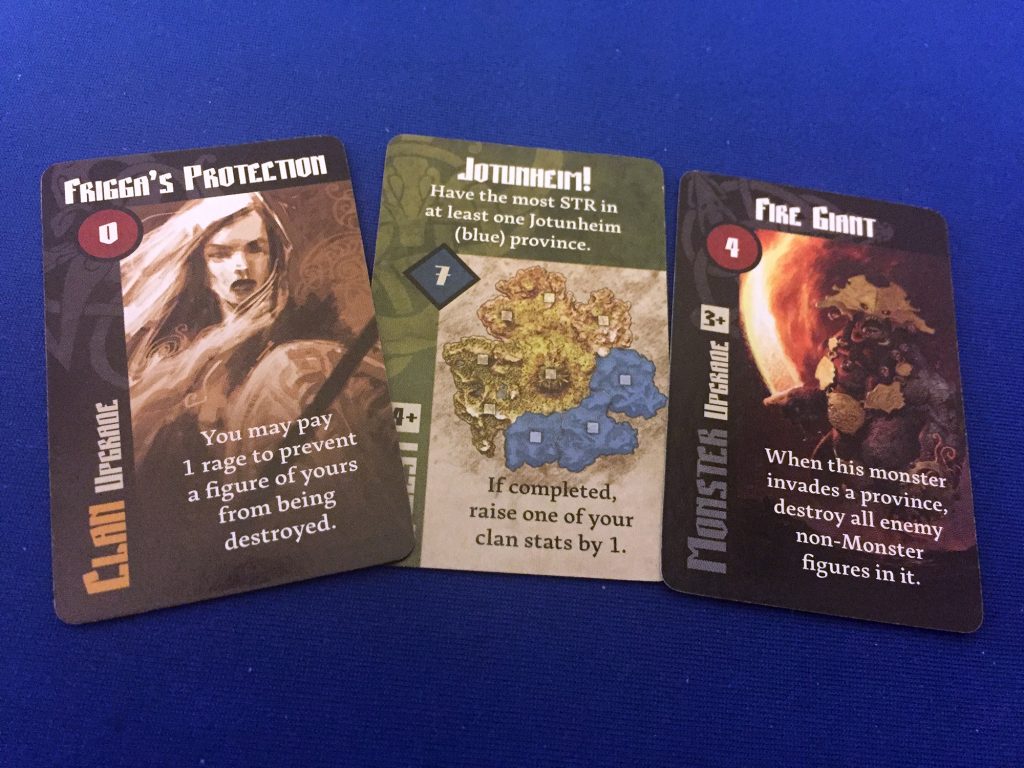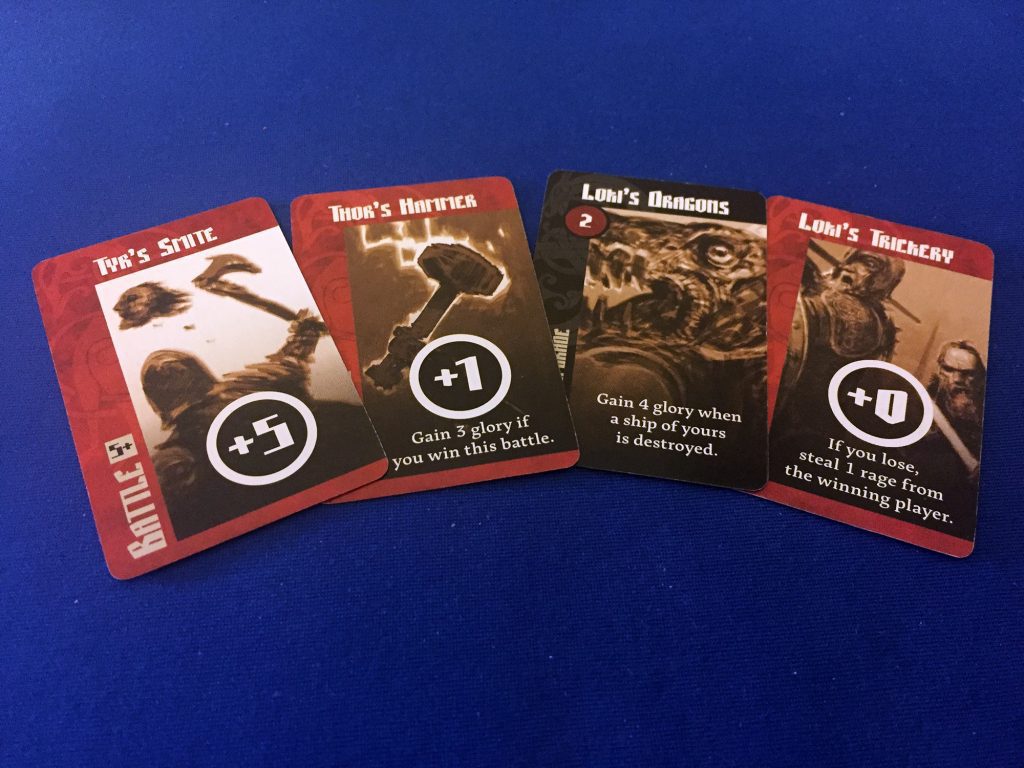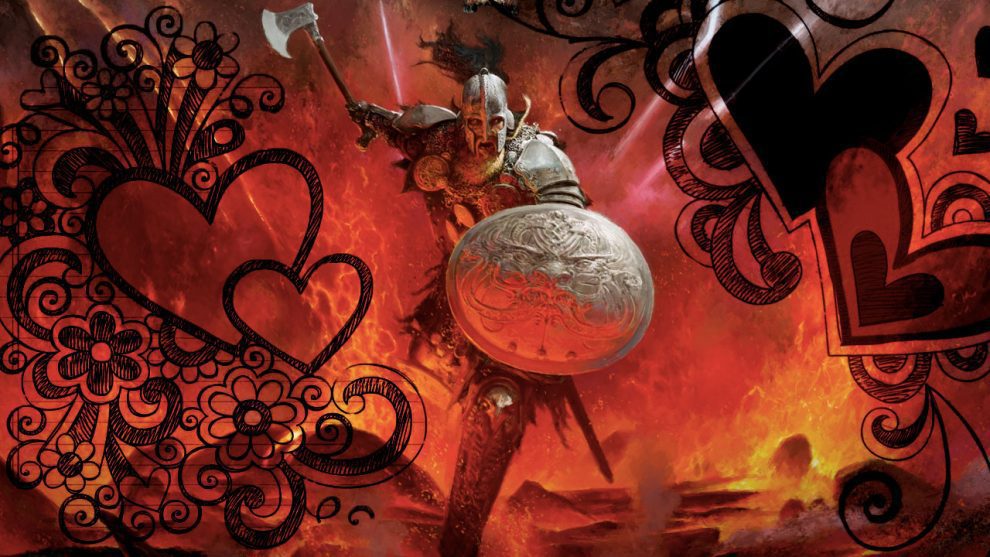Here at Meeple Mountain, we play a lot of games. This is pretty fantastic, especially since there are so many awesome new games coming out every day. However, sometimes it’s nice to go back and play an old favorite and be reminded of why it is that we love it. Join us as we take a look at “Games We Love.”
As a self-professed member of the “cult of the new,” I’m always excited to hear about new games. I subscribe to multiple gaming podcasts and YouTube series, and am always on the lookout for the next big thing. The anxious anticipation of a new unplayed game is a remarkable feeling. That being said, it’s nice sometimes to go back and play a game that you know you love. Today on the “Games We Love” series, I’ll be taking a look at Blood Rage.
All About Blood Rage
Blood Rage is an area control, card drafting game about mythical viking clans vying for glory. It was designed by Eric Lang and published by CMON. Blood Rage has been nearly universally well-received, nominated for multiple honors including Golden Geek awards for Game of the Year, Best Thematic, Best Strategy, and Best Artwork/Presentation, as well as landing on the recommended list for the prestigious “Kennerspiel des Jahres” (connoisseur/enthusiast game of the year). Additionally, it won Dice Tower awards for Best Strategy Game and Best Board Game Components. I wouldn’t say that it necessarily put CMON and designer Eric Lang on the map, each having an established pedigree, but it certainly solidified their respective places as titans of the board gaming industry.
Blood Rage is certainly not an old game, with a retail release of November 2015, but it’s one that I’ve played over and over again. This is a game that I’ve ranked on BoardGameGeek as a 10/10, and am always excited to play it. So what makes Blood Rage such an overwhelming success and critical darling? Even more importantly, what makes it continually hit the table for me? Today, in lieu of a standard review, e.g. gameplay, mechanics, pros, cons, etc. I’m going to talk about why I love Blood Rage.
Aesthetic Appeal
I would be remiss if I didn’t mention how amazing this game looks on the table. Visual appeal may not be the most important factor in what makes a good game, but it certainly makes a difference for me. Sure, there are plenty of well-regarded games out there that rate on a visual scale from plain to straight-up ugly (looking at you, Castles of Burgundy), but there is something so aesthetically pleasing about a game with great artwork and beautiful components. While one can debate the relative merits of wooden meeples vs plastic miniatures, there’s no denying that the minis in Blood Rage look fantastic, even without taking the time to paint.

Importance of Strategy
There’s a reason that Blood Rage has gotten such acclaim as a strategy game. Sure, the components are gorgeous, but it takes more than just a pretty face to keep my attention. One thing I love about Blood Rage is the depth of strategy involved in this game. I’m not going to go too in depth into how the game plays. I’ll leave it to Rodney with Watch It Played to teach you how to play Blood Rage. I’m going to just focus on the strategy of the game.
From the card-play to the action-point allowance system, Blood Rage is a pretty tight game where one or two moves can crown you the glorious victor, or leave you in a crushing defeat. Unlike many area control games, though, Blood Rage is a points-based game. This effectively means that there’s more than one path to victory. There are many ways to get points, or glory. The most direct way, of course, is through crushing your foes in battle, but glory is also given for completing quests, upgrading clan stats, and even potentially for dying a glorious death, be it through clan upgrades or through Ragnarok itself.
I love to try out different strategies with each new game and see if I can bring them to fruition. Whether it’s the heavy battle strategy using cards from Thor and Odin, or pursuing multiple quests, even down to that trickster Loki strategy who essentially wins by losing. I love that the cards are thematically represented as such. I have to admit that playing the Loki strategy is my favorite, just because I relish being an instrument of chaos. Other players are often quick to catch on to this, though, and may draft all of the Loki cards just so I don’t get them. Every time I play it’s an interesting puzzle that keeps me engaged from start to finish.
Playing Your Cards Right
One of my favorite things about Blood Rage is the card-play. Each round, players are dealt a hand of eight cards that they then draft down to six. Right from the beginning this makes things interesting. Which card do you take? Which cards do you let pass to your foes? Which cards do you take so that your opponents don’t get them? With some cards helping in combat, some providing incredibly powerful upgrades, and others providing those all important potential quest points, it seems like everything is equally awesome. I haven’t even mentioned the special monster upgrades that give you control of amazing mythical figures that are yours for the rest of the game.

What makes card drafting in this game so interesting is that there are so many great card combinations. Certain cards have a natural synergy. For example, the ability to invade with an additional warrior for free works great when each pair is three strength, instead of the normal two strength. (one per warrior).

Trying to snag these combos, or conversely, prevent your opponents from getting them makes the card drafting both interesting and integral to gameplay. The card draft becomes both your strategy and your means of execution.
I mentioned combat earlier. This is another arena in which I really dig the card-play. When two or more factions are competing for control of an area via the act of pillaging, all players secretly select one card to be used in combat then simultaneously reveal them. Whoever has the highest combined strength (from cards and figures) in the area is the victor. The twist is that the winner of the battle must discard the card they used. This makes every combat interesting, and gives me that intriguing risk/reward dilemma. Do I go all out in this combat but potentially lose my best combat card? Do I risk losing a battle by playing a less powerful card in the hopes that my forces can triumph through strength alone? It’s these types of choices that keep me engaged from start to finish. Not to mention that the cards only get better and better as the game progresses. Some of those 3rd Age cards are ridiculous.

Strong Theme
I’m a big believer in theme. Oftentimes, I can enjoy mediocre game mechanics if it has a great theme. Fortunately, Blood Rage has both good mechanics and a strong theme. In addition to the aforementioned card-play mechanics that I love, I absolutely adore the theme of Blood Rage. You are mighty Viking clans, vying for control, pillaging villages, and dying glorious deaths. So many elements of this game just make sense thematically. Upgrading your clan gives you new abilities. Winning battles gives you glory. Pillaging gives you rewards. Dying figures go to Valhalla. The cards match the Norse mythological theme as well. Tyr cards are mighty in battle, Thor grants additional glory, while Loki cards allow you to engage in general mischief, stealing points or gaining glory while losing.

Having the beautifully sculpted miniatures only adds to the thematic experience as you march your figures across the board. It won’t take long for you to immerse yourself in your clan and bring out your inner Viking. Blood Rage is truly a thematic experience that will have you engaged from beginning to end.
These are just a few of the many reasons that I love Blood Rage.












Add Comment